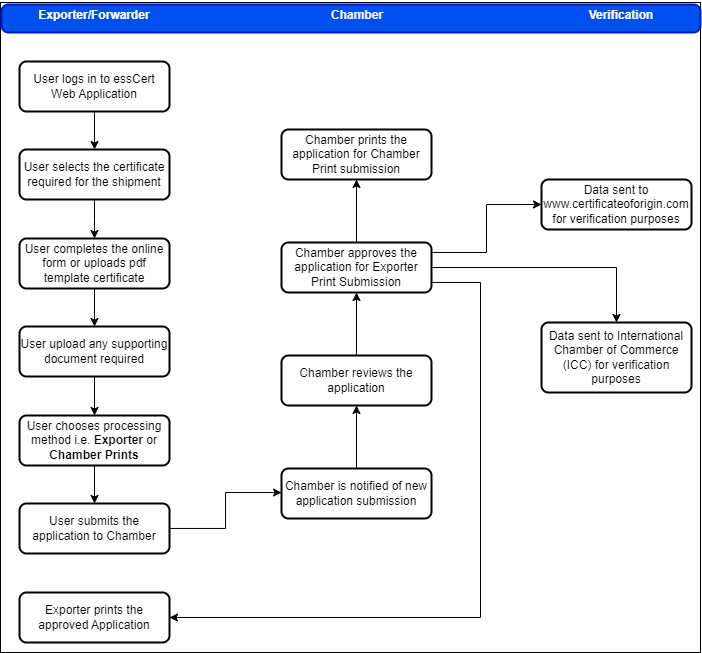CO Process Flow
A guide to how CO document gets through different stages
A Certificate of Origin is an official administrative document that certifies that goods are wholly obtained, produced, manufactured, or processed in a particular country. It declares the ‘nationality’ of the product and serves as a statement by the exporter and importer to satisfy customs and/or trade requirements. There are two main types of COs:
Non-preferential CO
Non-preferential CO is important for the application of any quota and for the application of anti-dumping rights. It is also important if an indication of origin was introduced to the product or its packaging as well as if any political measures are taken i.e., embargoes or boycotts. Typically, it is issued by the Chambers of Commerce upon the request of the exporter, sometimes it is issued by customs or other authorized institutions appointed by the government.
Preferential CO (PCO)
Preferential CO (PCO) allows an importer to pay lower or no customs duty when you export your goods under a Free Trade Agreement or Schemes of Preferences. Typically, a PCO is issued by the country’s Customs Authority.
Key Steps
ICE DTO enables exporters or forwarders to apply for electronic COs or PCOs. Key steps in the process include:
Apply: Online Application for eCO by Exporter or Forwarder
Review: Online Review & Approval by Chamber of Commerce / Authorized Body
Issue: Online Transfer (or printing) by Exporter or Chamber
Verify: eVerification by Customs or 3rd Party
Post-certification, it is possible that the Country of Import also requires the document to be legalized by its embassy. In that case, the CO must be signed/sealed by a notary before being presented to the embassy to complete the legalisation process.

Process flow with the eCO returned to the Exporter / Forwarder
Updated almost 2 years ago
